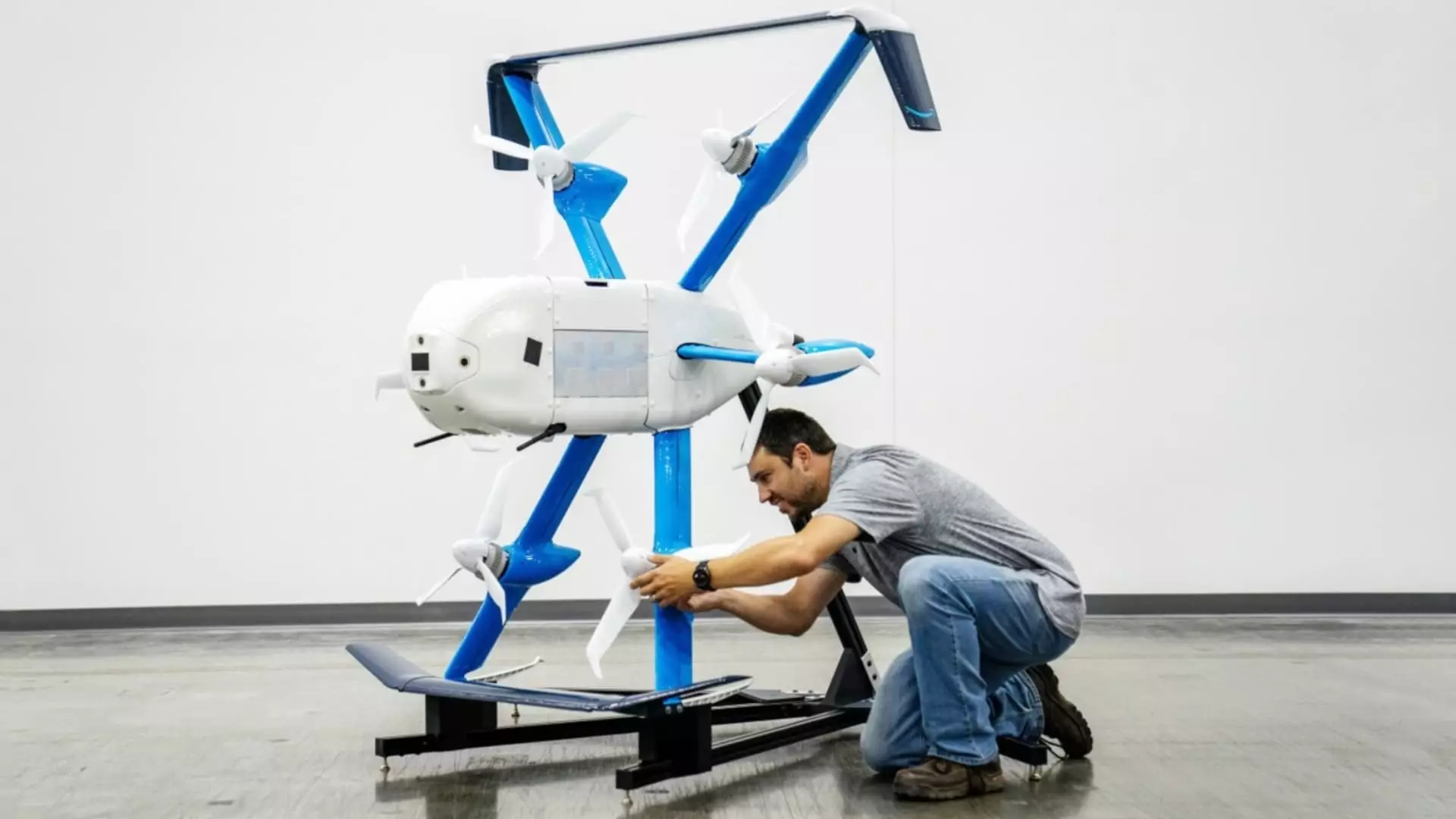Amazon has revitalized its drone delivery service, marking a pivotal moment in its ongoing quest to redefine package delivery. After a pause that lasted several months, the company has resumed operations in College Station, Texas, and Tolleson, Arizona. This decision follows a meticulous overhaul of their drone control software, sparked by the detection of an anomaly in the altitude sensor due to environmental factors, specifically airborne dust. Although there was no immediate risk to safety, Amazon chose to err on the side of caution, highlighting a fundamental commitment to consumer protection and operational integrity.
The resumption signifies not just a return to business but also an affirmation of Amazon’s long-term vision championed by its founder, Jeff Bezos. For over a decade, the company’s ambition of delivering consumer goods through drones has been treated with skepticism and seen as a futuristic fantasy. Yet, with technological and regulatory hurdles being methodically navigated, the prospect of rapid autonomous delivery is inching closer to reality.
Commitment to Safety and Innovation
Amazon’s drone program, now utilizing the newly developed MK30 model, embodies an unprecedented level of safety and innovation in the fast-evolving logistics landscape. Following a comprehensive software update, which has received clearance from the Federal Aviation Administration (FAA), Amazon has reported a surge in interest for its Prime Air service. It’s fascinating that in an era where speed is paramount, a thirty-one-minute delivery of ZzzQuil to an Arizona doorstep could become commonplace, showing both the power and the potential of drone technology.
Despite the evident enthusiasm surrounding the recent updates, the road to widespread implementation has been littered with challenges. The drone delivery initiative faced significant setbacks over the past year, including layoffs as rising costs necessitated a reevaluation of the program’s direction. Additionally, a previous crash during testing and operational inefficiencies have brought forth a variety of questions regarding the reliability of drone technology. It raises a compelling point: can Amazon manage to navigate these challenges without compromising on its safety protocols?
Expanding Horizons and Addressing Concerns
The aspiration to broaden the Prime Air service beyond its current limited geographic footprint hints at a larger ambition. Amazon aims to achieve a staggering goal of delivering 500 million packages by drone each year by 2030. Such a scale is not without its implications. The company is eyeing not only domestic expansion but also international opportunities in regions like the United Kingdom, showcasing a willingness to embrace globalization in its delivery operations.
Nevertheless, this transformative shipping model isn’t an unconditionally welcomed innovation. Residents in College Station, for instance, have voiced concerns over noise levels attributed to drone operations. In response, Amazon is taking proactive measures by relocating its drone hubs further from residential areas and investing in quieter drone technologies. The new MK30 model, with its quieter operation and ability to navigate inclement weather, appears to be a tactical move in addressing these valid community concerns while promoting progress in logistics.
Stumbling Blocks on a Path to Dominance
Yet, despite these advancements, the drone program’s journey has not been entirely smooth. Historical incidents of mid-air collisions—caused by human error or software malfunction—reveal inherent risks that come with deploying robotic technology in civilian airspace. Such transgressions underline the duality of innovation and regulation; while companies like Amazon push boundaries, unforeseen complications can emerge, underscoring the need for stringent oversight.
In recent years, as societal pressures for efficiency in delivery systems heighten, it will be equally essential for Amazon to demonstrate that its innovations do not compromise public safety and trust. With a growing number of players entering the drone delivery market, the stakes are escalating, making it essential for companies like Amazon to maintain not just pace, but also responsibility.
As Amazon propels its drone program forward, it operates on the edge of technology and innovation, capturing the imagination of consumers while confronting the complexities of real-world implementation. The intersection of curiosity and skepticism surrounding drone deliveries will undoubtedly influence the future landscape of logistics, challenging companies to navigate their ambitions with vigilance and care.


Leave a Reply